Veeco launches Lumina+ MOCVD system, receives Rocket Lab order
Introduction & Market Context
Planisware (EPA:PLNW) reported strong Q1 2025 financial results on April 29, with revenue reaching €47.5 million, up 14.3% year-on-year in constant currencies. The project management software provider’s stock responded positively to the announcement, rising 5.77% to €23.85 during the trading session, reflecting investor confidence in the company’s performance despite challenging market conditions.
CEO Loïc Sautour and CFO Stéphanie Pardo presented the quarterly results, highlighting the company’s resilience and continued growth trajectory in an environment where customer decision-making cycles are lengthening.
As shown in the following slide summarizing the quarter’s key highlights:

Quarterly Performance Highlights
Planisware’s Q1 2025 performance was primarily driven by strong demand for its Project Portfolio Management (PPM) and Strategic Portfolio Management (SPM) solutions. The company emphasized that while it is not directly impacted by tariffs, it has observed that customers’ decision-making processes are taking longer in the current economic climate.
The revenue growth building blocks reveal the composition of the company’s 14.3% year-on-year revenue increase in constant currencies, with SaaS & Hosting services leading the growth at 18.5%, followed by support activities at 16.7%:

This performance continues the momentum seen in Q4 2024, when the company reported 17.4% revenue growth in constant currency. The Q1 results align with Planisware’s strategic focus on expanding its SaaS offerings while maintaining strong profitability.
Revenue Composition Analysis
The evolution of Planisware’s revenue mix demonstrates the company’s successful transition toward a recurring revenue model. In Q1 2025, recurring revenue increased to 92% of total revenue (€43.9 million), up from 91% (€37.2 million) in Q1 2024:
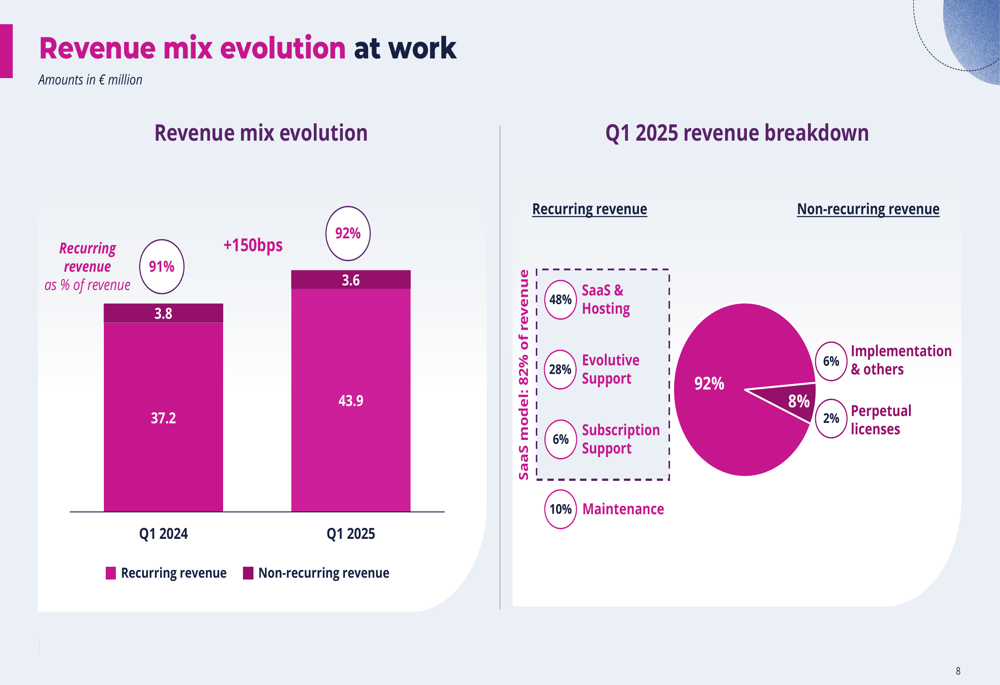
A detailed breakdown of revenue streams shows substantial growth in SaaS & Hosting services, which increased by 20.4% to €22.7 million and now represents 48% of total revenue. Evolutive support services grew even faster at 21.8% to reach €13.2 million. Meanwhile, perpetual licenses continued their planned decline, falling 24.1% to €0.8 million as the company shifts further toward subscription-based offerings:
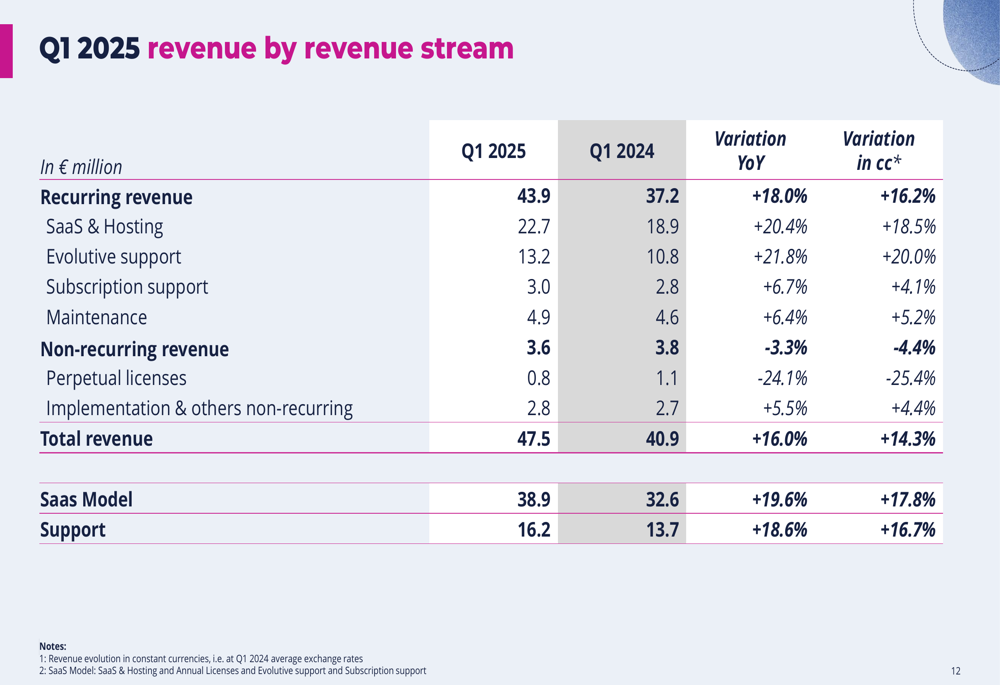
Strategic Initiatives
Planisware highlighted several strategic achievements during the quarter, including geographic expansion with new offices in Brussels and Seoul, strengthening its global presence. The company also successfully held its annual user conference in San Francisco, which attracted 216 customers, and continued advancing its SPM platform with new AI capabilities.
The quarterly presentation showcased a selection of notable new client wins across various industries, demonstrating the company’s broad market appeal:

Planisware emphasized its resilience in the face of potential economic headwinds, citing several factors that position the company to navigate challenging market conditions:
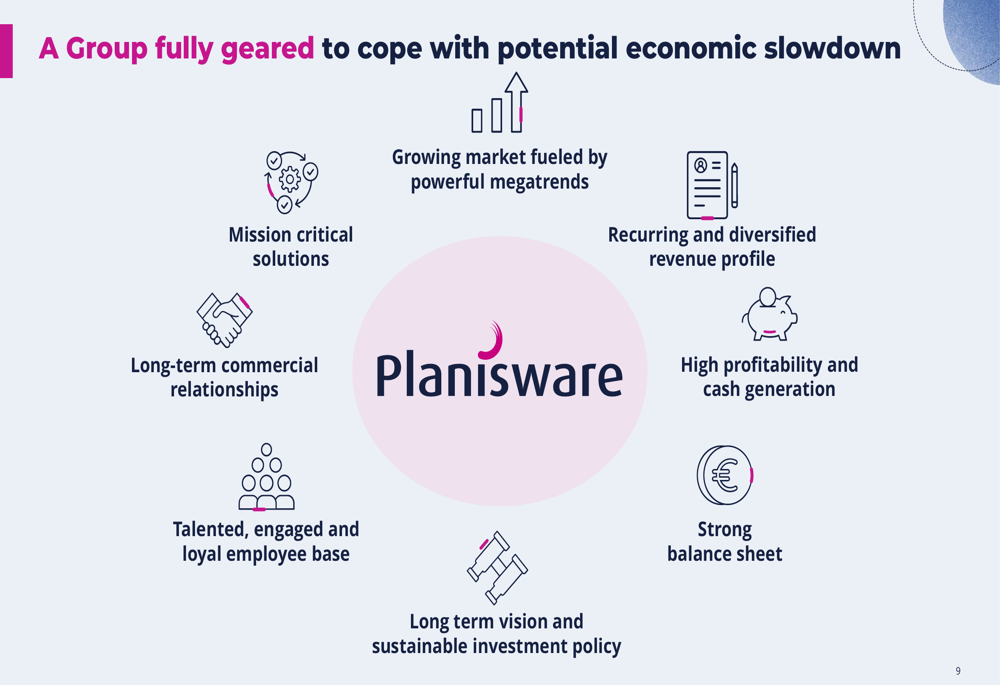
Forward Guidance
Planisware confirmed its objectives for 2025, maintaining the same guidance provided in its Q4 2024 earnings report. The company expects:
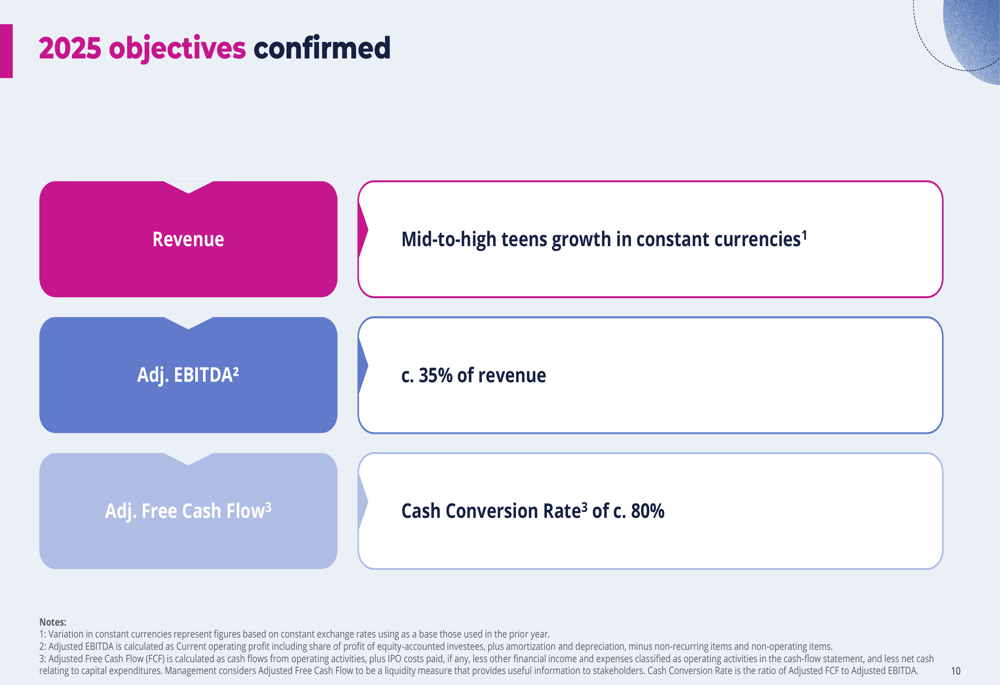
These targets align with the company’s long-term strategy of balancing growth investments with strong profitability and cash generation. Management expressed confidence in achieving these objectives despite the noted slowdown in customer decision-making processes.
The company’s fundamentals remain solid, with a strong balance sheet and high recurring revenue providing visibility and stability. Planisware’s 2024 performance metrics illustrate the company’s overall strength, with €183 million in total revenue, 89% recurring revenue, and a 35.2% adjusted EBITDA margin:
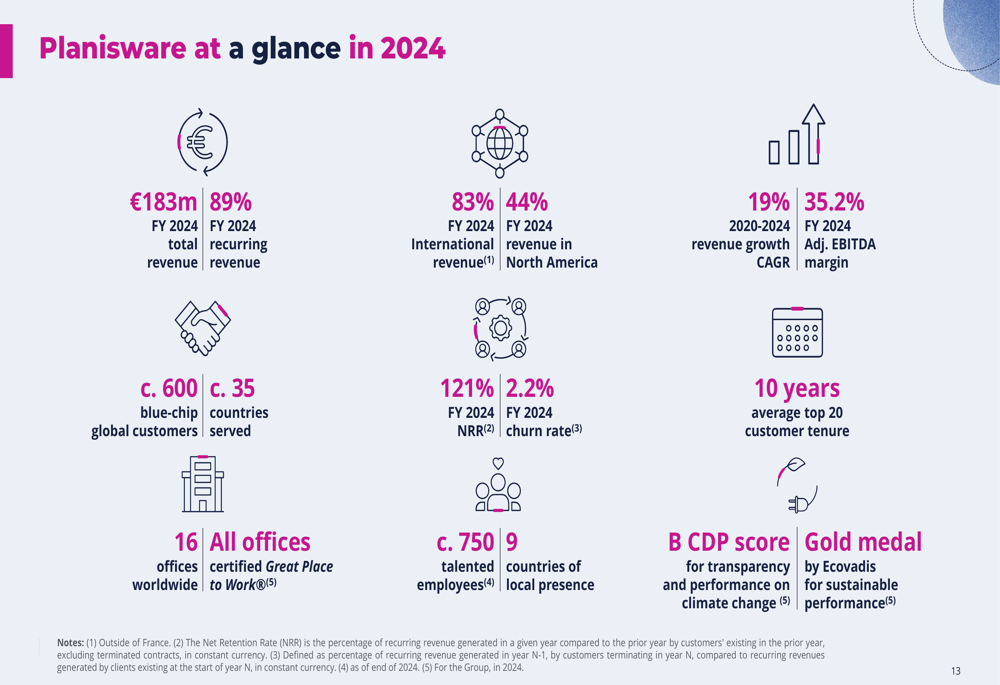
Planisware’s Q1 2025 results demonstrate continued execution of its strategy to focus on SaaS growth while maintaining profitability. With 92% of revenue now coming from recurring sources and continued geographic expansion, the company appears well-positioned to achieve its full-year objectives despite the challenging macroeconomic environment.
Full presentation:
This article was generated with the support of AI and reviewed by an editor. For more information see our T&C.
